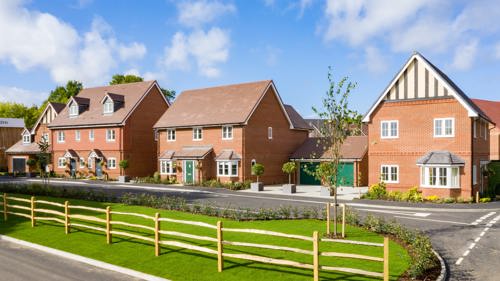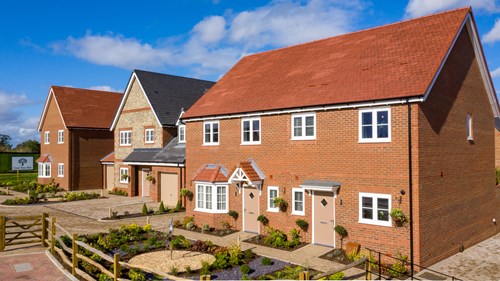Knowing about the past is always important and this includes where you live. It provides context to features that we see every day, especially while we are all spending more time at home, and helps create connections to our local areas.
As May was Local and Community History Month, we’ve been working with our partners, as well as looking through our archives, to see what we can tell you about our various development sites’ previous uses. From vehicle testing to scythe making, our sites have a rich history, which have influenced our thinking around design at our new developments.
Buckler’s Park
Prior to our involvement, the Buckler’s Park site in Crowthorne was home to the Transport Research Laboratory (TRL). This historic use of the site has had a major influence on the character of our development.
Originally called the Road Research Laboratory, the TRL was formed in 1925 following the rapid increase in popularity of motorised vehicles over the horse and cart. The TRL acquired the site in 1966, using the space for vehicle testing and research around road safety. It was here that the mini roundabout was first created, and initiatives, such as speed humps and electric control systems for disabled drivers, were tested before wide-scale use.
In 2004 the TRL moved from what is now Buckler’s Park to its current location in Wokingham, leaving the site vacant. From the start of our involvement, we were keen to acknowledge the site’s heritage. This included turning the former racetracks into integrated roads and paths around the 100-acre Buckler’s Forest, and naming streets after racing tracks from around the world.
The area’s history also helped us name Buckler’s Park. We wanted to honour local institution Buckler Cars, which produced approximately 400 sports cars from its base in Crowthorne, between the late 1940s and its closure in 1965.
You can read more about the history of Buckler’s Park in this feature from Bracknell News.
Finchwood Park
Our Finchwood Park development is located in Finchampstead, Berkshire. After we acquired the site and before it was remediated, an excavation led by Wessex Archaeology, unearthed evidence of a smithy – a workplace where metal is fashioned by heating and hammering – dating back to the 17th or 18th century.

While there are few signs to the untrained eye that this was a place where metal was heated and hammered into shape, analysis of the soil has shown a great deal of hammerscale – impurities formed as the blacksmith hammers iron on the anvil. The small patch of red soil, visible in the image, suggests the presence of a hearth as clay turns red when subjected to heat.
Further exploration shows that this smithy was associated with a farm that last appeared on a map in 1817. The smithy was deliberately placed 175 metres away for safety reasons and would have produced and maintained horse shoes, scythes and other equipment commonly used on the farm. As a nod to the historic use of the farm on the site, we have added a bridle path, which runs through the development and links up to a wider network in the surrounding area.
Cross Trees Park
The archaeological survey at our Oxfordshire development, Cross Trees Park, also conducted by Wessex Archaeology, led to the discovery of a number of unusual items including flint tools, animal bones and pottery.

However, perhaps the most interesting finds were those from the Roman period: a series of coins and a large wooden chest containing two plates. The coins are imprinted with the mark of Emperor Constantine, who ruled over the united empire from northern England to the Red Sea between 312 and 324 AD and was the first Roman Emperor to convert to Christianity (on his deathbed).
Some of these artefacts have been placed within a labelled glass cabinet, installed at our Cross Trees Park Visitors Centre. This includes the coins, fossils and tools for textile making made from worked animal bone. Hopefully, sometime in the not too distant future, we’ll be able to welcome people back to see them (currently our Visitors Centres are open for appointments only because of Covid-19).
Ruth Hopkins, Land and Planning Director, Legal & General Homes





